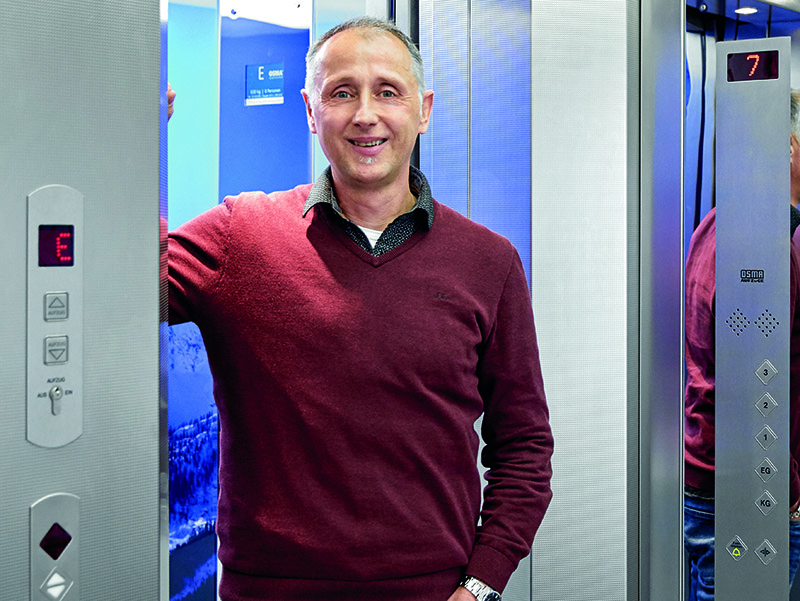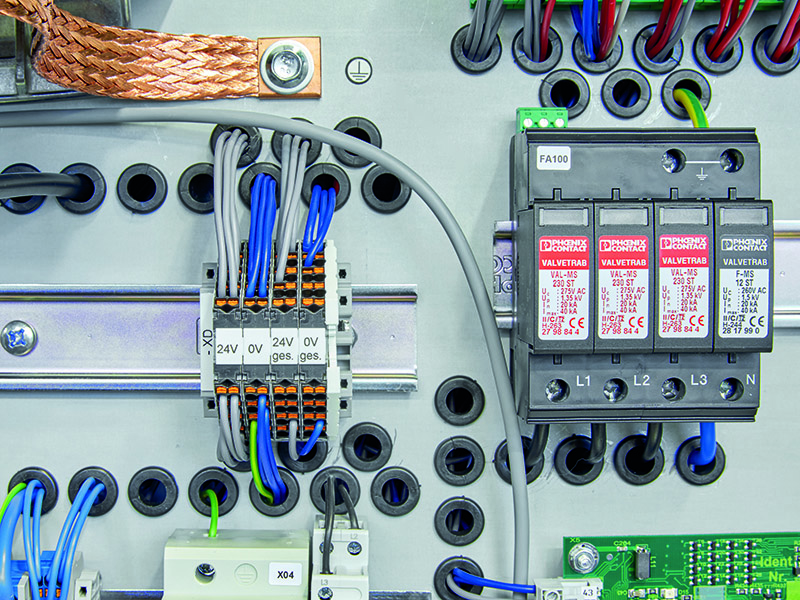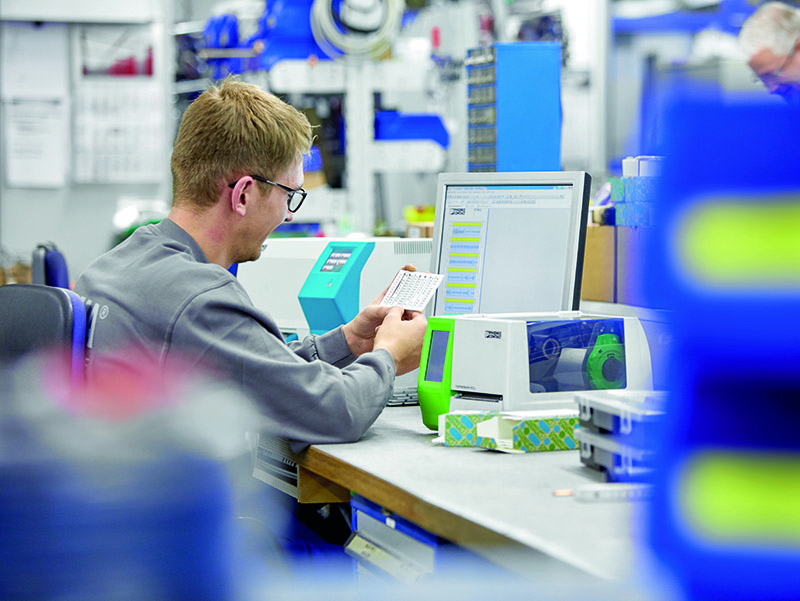Saving time and space
There is increasingly little space left in lifts for electronics. This is why the lift manufacturer Osma relies on the compact push-in terminal blocks of Phoenix Contact.
Although safety and comfort continue to have priority in lifts, design aspects and individual customer wishes are becoming increasingly important. For cost reasons, there is a bitter struggle in this respect for every millimetre of construction space. Lift builders already have to operate flexibly when it comes to lift planning – also because technical standards and safety standards change frequently. Terminal blocks have to be fast and easy to connect too and capable of direct insertion directly without tools.
“These days, lifts are normally planned without an additional machine-room,” explained electrician Ulrich Kattmann, member of the electric design department at Osma. “For the control we need all the free space available for the components – here we use the just 3.5 mm wide push-in terminal blocks from Phoenix Contact.”
Terminal blocks were redesigned
To simplify the later wiring at the building site, the terminal blocks were redesigned for connection of the control. The sequence of the connecting terminals in new lifts depends on the individual wires of the cables, which can be run from the lift shaft and car to the control. In the past, only one trunk cable was used here, whose stripping was very time-consuming. It was also necessary to pay special attention to where each line was connected. This has now become far more straightforward, since the sequence of the terminals depends on the individual cables.
The additional room needed for electronics, which the restructuring with terminals in standard width would have required, could be more than compensated for by the compact design of the PT 1.5/S Quattro four-wire push-in terminal which is only 3.5 mm wide. Apart from multiple wire, two tier, three tier and knife disconnect terminals, the Clipline complete series terminal product range also includes sensor and actuator terminals with simple potential distribution and line entry.
Modular system design
Osma uses the plug-in versions of the narrow terminal series for the modular control structure. The operating panel is prefabricated for maintenance mode and connected via the plug-in terminals with the lift control. The PTRV potential distributors from the series terminal range are used for the potential distribution after the 24V power supply. Given a width of just 8.3 mm, 16 lines with a cross-section of 1.5 mm² can be connected on four levels and 32 on eight levels (Figure 4). The compact potential distributor product range is complemented by versions with 6 mm² feed-in and bridging option.
“Another reason for the use of push-in terminal blocks is conductor connection without a special tool,” according to Kattmann. “We profit from this in the workshop, but especially during lift construction at the building site.”
This is because the electric wiring of the lift control occurs with pre-assembled lines with wire end ferrule. Lines pre-treated in this way – also smaller cross-sections down to 0.25 mm² – can be inserted easily and without tools into the terminal with up to 50 percent lower insertion force.
Orange pushers
The cables of the shaft and car installation and their individual wires are stripped and the flexible lines can be connected without wire end ferrules. The clamping points are opened via the orange actuation button. “Here we benefit on the one hand from the fact that we do not need to crimp any wire end ferrules at the building site,” explained Kattmann, “and on the other from being able to operate the terminals with any tool without direct contact with the live parts via the actuation button.”
The clamping points are clearly identified by the striking signal-orange pushers. Operation and conductor entry are clearly separated optically from each other. In addition, the terminals cannot be damaged by the actuation button during operation by incorrectly employed tools. Kattmann, “This makes wiring at the building site safer even under adverse conditions.“
Phoenix Contact marking system
“We use the Phoenix Contact marking system to label the terminal blocks.” The labelling data are first prepared via the planning and labelling software Clip Project.
The print data is then issued to the printing system Bluemark CLED and printed on mats in Unicard format. These standardised mats are available for terminal blocks, line and cable identification and for device and operating equipment identification. The flexibly usable labels are printed out on Thermomark Roll label printers.
www.osma-aufzuege.de




























Write a comment